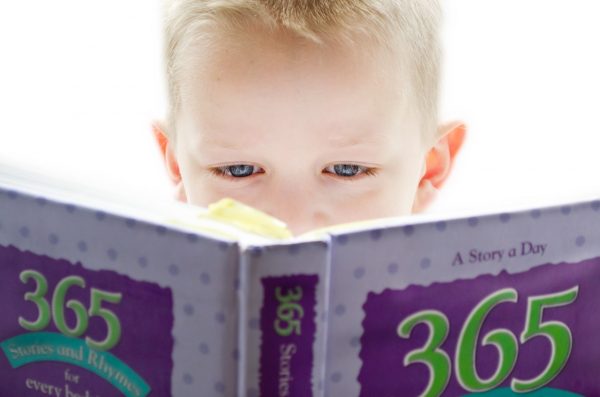The Basics of Teaching Reading: Practical Tips for Parents and Educators
The Basics of Teaching Reading: Reading is a fundamental skill that serves as a gateway to knowledge and lifelong learning. It allows individuals to explore new worlds, gain insights from diverse perspectives, and develop critical thinking abilities. Therefore, it is crucial for parents and educators to have a solid foundation in teaching reading, as they play a pivotal role in shaping a child’s literacy journey.
This guide aims to provide practical tips and insights that will equip parents and educators with the necessary tools to foster a love for reading and support children’s reading development. Whether you are a parent looking to help your child with their reading skills or an educator seeking effective teaching strategies, this resource will serve as a valuable companion.

The Basics of Teaching Reading: A Guide for Parents and Teachers
![]()
As parents and teachers, we know that teaching children to read is one of the most important and rewarding tasks we can undertake. Reading is the foundation for a child’s academic success, and it sets the stage for a lifetime of learning. Unfortunately, many parents and teachers feel overwhelmed when it comes to teaching reading. While there is no “one size fits all” approach to teaching reading, this guide outlines the basics of teaching reading in a way that is easy to understand and implement.
The first step in teaching reading is to create a positive and supportive learning environment. This means making sure that the child feels comfortable and confident in the learning space. Establishing a consistent reading routine and providing plenty of positive reinforcement can help children to feel comfortable and secure in their learning environment.
The second step is to teach phonics. Phonics is the understanding of the sound each letter makes and how different sounds blend to make words. A variety of techniques can be used to teach phonics, such as flashcards, games, and songs.
The third step is to introduce sight words. Sight words are words that are recognized by sight, without having to sound them out. Learning sight words helps children to become more confident readers and to recognize words more quickly.
The fourth step is to provide books and other reading materials that are appropriate for the child’s age and reading level. Reading materials should be interesting to the child and should provide a challenge that is appropriate for their reading level.
Finally, it is important to provide opportunities for practice. Whenever possible, provide the child with opportunities to practice their reading skills in a low-pressure environment. This can be done by having the child read aloud to you, or by having them read stories and articles to themselves.
By following these steps, parents and teachers can provide children with the building blocks they need to become successful readers. With patience and practice, children can become confident and proficient readers.
Strategies to Establish a Positive Reading Environment for Students
![]()
Creating a positive reading environment for students is essential for fostering a love of learning. It helps to promote a culture of literacy that encourages students to explore and discover new material. Here are some strategies that teachers can use to establish a positive reading environment in the classroom:
- 1. Make Reading Fun: Reading should be an enjoyable experience for students. Incorporate elements of fun into reading time, such as games, activities, and book talks. Encourage students to read books that are of interest to them, as this will make them feel more engaged in the activity.
- 2. Establish a Reading Routine: Establishing a consistent reading routine helps to create a positive reading environment. Establish a set time for reading, such as after lunch or right before recess. This will allow students to form a habit of reading and make it a part of their daily routine.
- 3. Create a Reading Space: Designate a space in the classroom that is dedicated to reading. This could be a reading corner, with comfortable seating and bookshelves. Decorate the space with posters and artwork that promote reading.
- 4. Model Reading: As the teacher, you should be a role model for reading. Show your enthusiasm for reading by reading aloud to the class, or discussing books that you have read. This will help to foster a culture of literacy in the classroom.
By implementing these strategies, teachers can create a positive reading environment for their students. This will encourage students to explore the world of literature and develop a love of reading.
Using Games and Activities to Reinforce Reading Skills
![]()
Reading is a fundamental skill for students of all ages that opens up the world of knowledge and learning. Games and activities used to reinforce reading skills can help students to expand their knowledge and make reading more enjoyable.
Here are some of the most effective ways to use games and activities to reinforce reading skills:
- 1. Word Puzzles: Word puzzles are a great way to help students practice their reading skills in a fun and engaging way. Crosswords, word searches, and fill-in-the-blank exercises can all help to improve students’ vocabulary and comprehension.
- 2. Reading Bingo: This classic game can be used to help students practice their reading skills in an exciting way. Assign students a reading list and ask them to find words or concepts in their reading materials that correspond with the squares on their bingo cards.
- 3. Reading Races: Divide students into small groups and assign each group a section of a book to read. Then, give each group a set amount of time to read the section. The first group to finish reading and answer questions correctly wins the reading race.
- 4. Charades: Charades is a fun game that can also be used to reinforce reading skills. Ask students to act out different characters, places, or objects from one of their reading materials. This will help to improve their comprehension and retention of the material.
- 5. Reading Board Games: Board games such as Scrabble and Boggle are great for helping students practice their reading and spelling skills. By playing these games, students can increase their knowledge of words and their understanding of grammar and sentence structure.
Using games and activities to reinforce reading skills can be an effective way for students to improve their reading and comprehension skills. By providing students with engaging and fun activities, they will be more likely to stay motivated and engaged in the process of learning.
Supporting Struggling Readers and Building Confidence Through Reading
![]()
Are you the parent of a struggling reader? Does your student lack confidence in reading? If so, you’re not alone! Many students struggle with reading, and it can take a toll on their overall academic success. Fortunately, there are ways to support your student and help them build confidence in reading.
One key way to help your student is to create a positive reading environment. This can include providing plenty of access to books, magazines, and other reading materials. You can also make reading fun by playing word games, or introducing books through audio or e-book formats.
Another important step is to set realistic goals. Work with your student to create small, achievable goals. This could include reading a certain number of pages or chapters in a book. Celebrate successes, and use mistakes as an opportunity to learn.
It’s also important to provide the right kind of support. Encourage your student to read out loud. Ask questions about the text, or discuss what’s happening in the book. You can also take turns reading, or read together as a family.
Finally, be patient and understanding. Reading can be a challenge, and it’s important to recognize your student’s efforts. Praise their hard work, and provide encouragement. With the right support, your student can build confidence in reading and become a successful reader.
Developing a Comprehensive Reading Program for All Learners
![]()
Developing a comprehensive reading program that provides all learners with the skills they need to be successful readers is no easy task. However, with the right approach, educators can create a reading program that helps students of all abilities reach their literacy goals.
At the heart of any successful reading program is a focus on instruction that is tailored to individual learners. Each student has unique strengths and needs, so it’s important to develop a program that accounts for these differences. To do this, teachers need to assess each student’s abilities and develop a plan that incorporates a range of strategies and activities.
A comprehensive reading program should include activities that are designed to help students develop fluency, comprehension, and vocabulary. One way to do this is to provide students with a variety of texts, ranging from easy to challenging. This will help students develop the skills they need to read different types of texts. It’s important to focus on texts that are interesting and relevant to students so that they are motivated to read.
Additionally, teachers should incorporate activities that are designed to help students develop phonemic awareness, phonics, and word recognition. This includes activities such as rhyming, syllabication, and letter recognition. These activities should be engaging and should focus on building students’ confidence as readers.
Finally, it’s important to provide students with opportunities to practice what they have learned. This includes activities such as writing, reading aloud, and discussing texts. These activities should be fun and engaging and should help students apply the skills they have learned.
Developing a comprehensive reading program is not an easy task. However, with the right approach, educators can create a program that is tailored to the individual needs of each learner. By focusing on instruction that is tailored to the needs of all students, teachers can help their students become successful, confident readers.
Assessing Reading Progress and Setting Goals for Student Improvement
![]()
As educators, we are tasked with helping students grow and develop their skills over time. One of the most important areas of growth for students is reading, which is both foundational and essential to learning. Therefore, it is important to assess students’ reading progress and set goals for how to improve.
When assessing a student’s reading progress, it is important to look at the student’s current abilities and determine where they stand. This can be done through observing a student during reading activities, testing their comprehension, reviewing their current reading level, and any other assessment that can provide useful information. It is also important to consider any potential learning disabilities that may be impacting the student’s reading ability.
Once a student’s current reading level has been identified, it is time to create goals for improvement. These goals should be specific, measurable, and achievable. For example, a goal might be to increase a student’s reading level by one grade level by the end of the school year. It is also important to consider what resources and supports the student may need in order to achieve these goals.
When setting goals for reading improvement, it is essential to be realistic and to focus on progress rather than perfection. Students should be celebrated for any progress they make, no matter how small. It is also important to provide students with positive reinforcement and feedback in order to keep them motivated and engaged.
By assessing a student’s reading progress and setting meaningful goals for improvement, we can ensure that students are receiving the support they need to succeed. With a little guidance and encouragement, all students can make progress and become successful readers.
Frequently Asked Questions
![]()
1. What are the basics of teaching reading?
Teaching reading involves a combination of various skills and strategies to help individuals develop their reading abilities. The basics of teaching reading typically include phonics, sight word recognition, comprehension strategies, vocabulary development, and fluency practice.
2. What is phonics, and why is it important in teaching reading?
Phonics is a method that teaches the relationship between sounds and written letters. It helps children understand how letters and letter combinations represent specific sounds, enabling them to decode words and read fluently. Phonics is crucial in teaching reading as it forms the foundation for word recognition and spelling.
3. How can sight words be taught effectively?
Sight words are commonly used words that cannot be easily decoded using phonics. Teaching sight words involves repetitive exposure and memorization techniques, such as flashcards, word games, and reading activities. Incorporating these words in context helps students recognize them quickly, improving their reading fluency.
4. What are comprehension strategies, and how can they be taught?
Comprehension strategies are techniques used to understand and interpret written text. These strategies include making predictions, visualizing, making connections, questioning, summarizing, and monitoring comprehension. Teaching comprehension strategies involves explicitly modeling and guiding students through these strategies as they read, helping them become active and critical readers.
5. How can vocabulary development be enhanced in reading instruction?
Vocabulary development is crucial for students to understand and express ideas effectively. To enhance vocabulary, teachers can incorporate word-rich environments, provide explicit instruction on word meanings and word relationships, encourage independent reading, and engage students in discussions and word games to promote word usage and comprehension.
6. How can fluency be developed when teaching reading?
Fluency refers to the ability to read with accuracy, speed, and expression. To develop fluency, teachers can provide repeated reading practice, use audio recordings to model fluent reading, encourage students to read aloud, and engage in activities that focus on phrasing, intonation, and expression. Regular fluency practice helps students read more smoothly and with increased comprehension.
7. How can struggling readers be supported in the classroom?
Supporting struggling readers involves differentiating instruction to meet their specific needs. Teachers can provide additional small-group or one-on-one instruction, use multisensory approaches to reinforce reading skills, offer targeted interventions, use technology-based resources, and provide ample opportunities for practice and reinforcement. Regular progress monitoring and ongoing communication with parents are also essential.
8. What resources can be used to enhance reading instruction?
There are various resources available to enhance reading instruction, including leveled readers, decodable books, guided reading materials, online reading programs, reading apps, educational websites, and interactive learning tools. Teachers can also utilize literature circles, book clubs, and library resources to expose students to a wide range of texts and genres.
Conclusion: The Basics of Teaching Reading
![]()
In conclusion, teaching reading is a multifaceted process that requires a combination of skills and strategies. The basics of teaching reading include phonics, sight word recognition, comprehension strategies, vocabulary development, and fluency practice.
Phonics is crucial in helping children decode words and read fluently, while sight words require repetitive exposure and memorization techniques. Comprehension strategies help students understand and interpret written text, and vocabulary development enhances their ability to express ideas effectively. Fluency is developed through repeated reading practice and activities that focus on accuracy, speed, and expression.
Supporting struggling readers involves differentiated instruction, targeted interventions, and regular progress monitoring. Various resources, such as leveled readers, online programs, and interactive tools, can be used to enhance reading instruction. Ultimately, teaching reading is an ongoing process that requires patience, flexibility, and continuous professional development.



